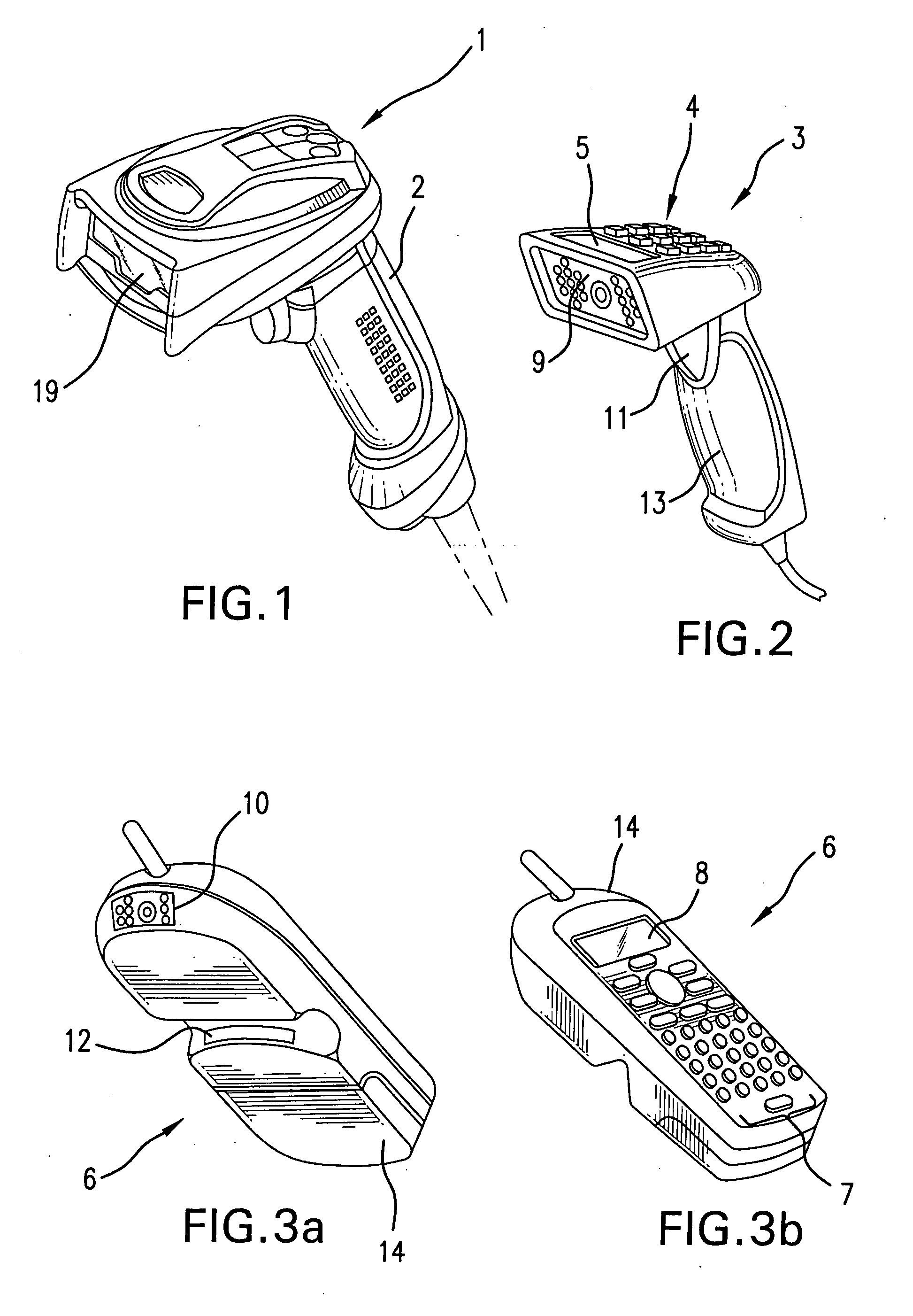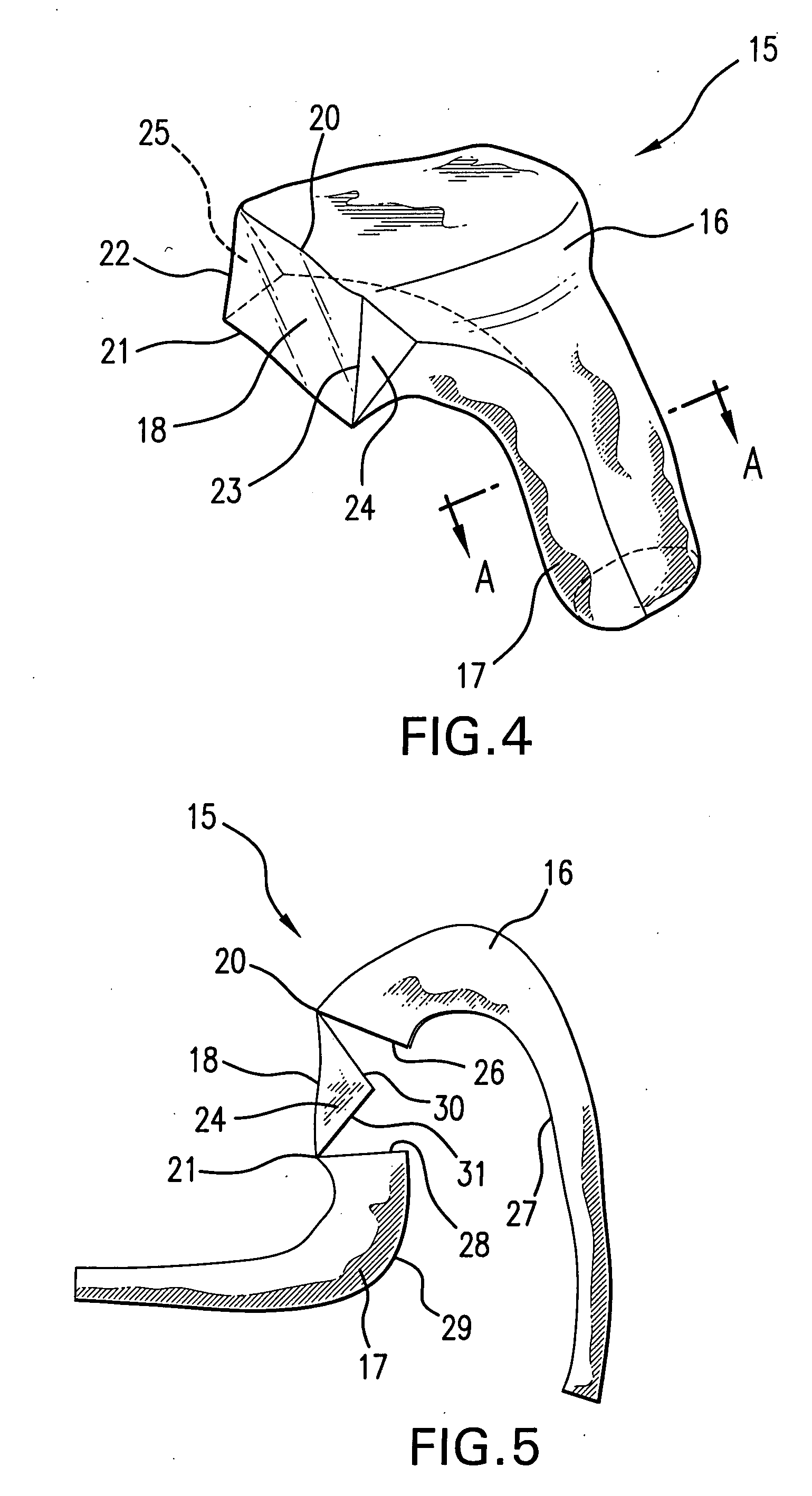Data collection device enclosure
a data collection device and enclosure technology, applied in the field of imaging devices and data collection devices, can solve the problems of obscuring keypad symbols and display windows, data collection devices are not constructed, and solvents that are normally used in disinfectants have a tendency to attack the plastic from which various equipment is made, etc., to achieve capture and manipulate images
- Summary
- Abstract
- Description
- Claims
- Application Information
AI Technical Summary
Benefits of technology
Problems solved by technology
Method used
Image
Examples
first embodiment
[0060]FIG. 4 illustrates an enclosure 15, in a closed configuration, according to the invention, for housing an imaging device of a type shown in FIGS. 1 and 2. In this embodiment, the enclosure can be made by thermoforming from an extruded thermoplastic sheet which, upon heating, can be drawn into a mold cavity by a vacuum, e.g., so that the heated sheet assumes the shape determined by the contours of the cavity. Thermoforming processes are well-known to those skilled in the art, which procedures can be adapted for manufacturing the subject enclosure and, therefore, further details of such processes, in general, are not herein described.
[0061]Suitable nonlimiting materials that can be used within the scope of the invention include ABS, polycarbonate, polystyrene, and PETG (polyethylene terephtalate glycol).
[0062]The one-piece enclosure of FIG. 4 can be considered a clam-shell, which includes a first part 16 and a second part 17, shown in FIG. 5 in an open configuration, which close...
second embodiment
[0080]FIG. 10 illustrates an enclosure 36, in an open configuration, according to the invention, for housing an imaging device 37 of the PDT type. PDTs suitable for this enclosure include members of the 7900 or 9500 families of PDTs manufactured by Hand Held Products, Inc.
[0081]The enclosure of this embodiment comprises a number of parts, which can be considered to form a disposable kit for enclosing an imaging device. These parts include an outer bag 38, having an open upper end 39 and a closed lower end 40, as well as a hard plastic end cap 41.
[0082]Outer bag 38 can be a shapeless bag, such as a clear poly bag, and particularly can be a flexible shapeless bag. Alternatively, outer bag 38 can be rigid, in the manner of the enclosure of FIG. 4.
[0083]The end cap includes an integral molded-in window 42, which window can be formed as part of the manufacture of a two-shot thermoplastic end cap with an overmolded window, formed during an injection mold process. FIG. 11 shows that the wi...
third embodiment
[0089]In the embodiment of FIGS. 14 and 15, according to the invention, the shapeless bag 47 has an open lower end 48, rather than a closed end (such as the closed end of the bag 38 of the previous embodiment). The imaging device, such as the PDT of the previous embodiment, is inserted through the open end 48 and pushed up to mate with the end cap 49 (for which the O-ring groove could be omitted); this end cap is sealed to the bag 47, as mentioned above. After the imaging device is fully inserted into the bag 47, the open end 48 is then closed with a twist tie 50 or other sealing mechanism or suitable sealing expedient.
[0090]A variation of the third embodiment includes a longitudinal slit along the length of the bag, providing a longitudinal opening so that the imaging device can be more easily inserted into the bag. Such an embodiment would be advantageous in the event that the bag is more streamlined to the imaging device; this could be the case particularly if the embodiment were...
PUM
 Login to View More
Login to View More Abstract
Description
Claims
Application Information
 Login to View More
Login to View More - R&D
- Intellectual Property
- Life Sciences
- Materials
- Tech Scout
- Unparalleled Data Quality
- Higher Quality Content
- 60% Fewer Hallucinations
Browse by: Latest US Patents, China's latest patents, Technical Efficacy Thesaurus, Application Domain, Technology Topic, Popular Technical Reports.
© 2025 PatSnap. All rights reserved.Legal|Privacy policy|Modern Slavery Act Transparency Statement|Sitemap|About US| Contact US: help@patsnap.com



